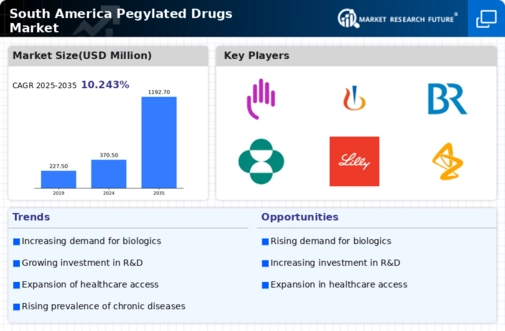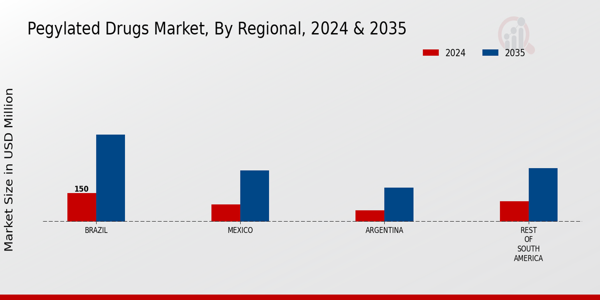The competitive landscape of the South America Pegylated Drugs Market is characterized by an array of companies striving to enhance their product offerings and expand their market presence. A notable trend within this sector is the focus on innovation and improvement of pegylated therapies, providing increased efficacy and reduced side effects for various medical conditions. Various players are actively engaged in research and development initiatives, looking to optimize drug formulations and cater to the needs of patients and healthcare providers.
Additionally, partnerships with local firms and healthcare institutions are becoming increasingly frequent, supporting the companies’ endeavors to penetrate the market more effectively and efficiently.
Bristol Myers Squibb has established a significant foothold in the South America Pegylated Drugs Market through its robust portfolio and commitment to advancing healthcare solutions. The company is recognized for its innovative approaches in developing pegylated medicines that address critical therapeutic areas such as oncology and chronic disorders. Bristol Myers Squibb's strengths lie in its ability to leverage extensive research and development investments, translating scientific advancements into market-ready treatments. This dedication positions the company as a leading player in South America, where it focuses on addressing regional health challenges while ensuring compliance with local regulatory frameworks.
Their ongoing clinical trials and collaborations with local health organizations further enhance their visibility and impact within the region.Novartis represents another major competitor in the South America Pegylated Drugs Market, with a strategic emphasis on delivering cutting-edge therapies. The company's portfolio includes key pegylated products that are well-regarded for their effectiveness in treating various health conditions, including cancer and autoimmune diseases. Novartis maintains a strong market presence across South America, supported by its established distribution networks and partnerships that facilitate broader access to its medications.
Additionally, the company has engaged in mergers and acquisitions to expand its capabilities and reinforce its research initiatives within the region. Novartis’s strengths further encompass its commitment to sustainability and corporate responsibility, making it a trusted name in pharmaceutical innovation and patient care in South America.


























Leave a Comment